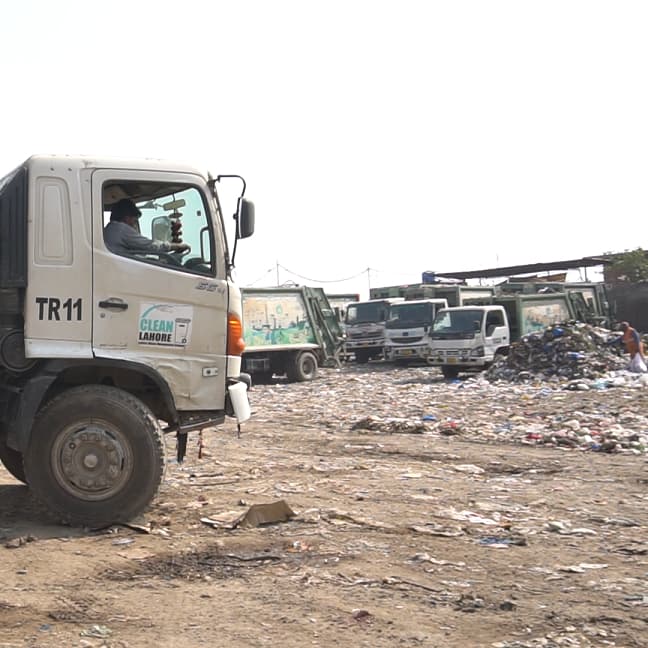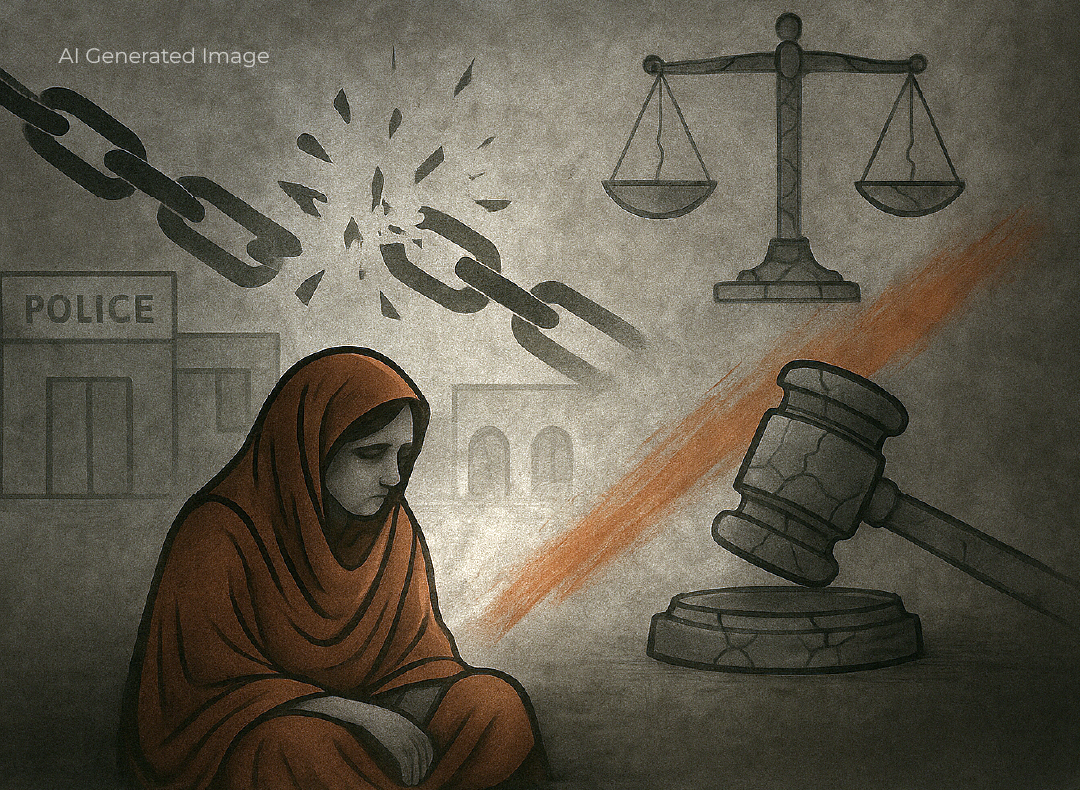Eighteen-year-old Sikandar has been collecting rags from garbage dumps on the bed of the river Ravi for the last ten years. He sells these rotten pieces of cloth to brick kilns which use them as fuel.
“These rags are trash for others but they are a source of income for me,” he says. “I have to collect them because my elder brother has shifted to a separate house after his marriage and now my old parents are dependent entirely upon me.”
Sikandar lives in Sanda, an old settlement in Lahore. Once the Ravi flowed near Sanda but now it has shrunk away and a wide levee -- with multiple-lane roads built on it -- separates it from the neighbourhood.
Sikandar is wearing a brown jeans and a grey shirt. A small ring can be seen in his ear. He comes here many times a day to collect rags in his loader rickshaw. Today he is working near Sagian bridge.
Garbage is smouldering at many places here so he is walking cautiously to avoid hitting any embers. He is exploring trash dumps to find his ‘required material’. He says, “The garbage smells awful but it does not bother me as I am used to working with it.”
Suddenly he finds a large plastic bag full of trash. He opens it and separates rags from other things in it. He says he collects nearly 200 kilograms of rags daily and sells those to make ends meet.
Like Sikandar, thousands of young boys and girls sift through trash in various parts of the city – including the river’s bed – to earn their livelihood. According to a rough estimate, all these waste collectors scan, search and move thousands of kilograms of trash every day in and around the Ravi alone.
According to the Lahore Solid Waste Management Company, a subsidiary of the city government, 85 per cent of garbage produced in Lahore reaches officially-designated dumping sites but its officials do not know what happens to the remaining 15 per cent.
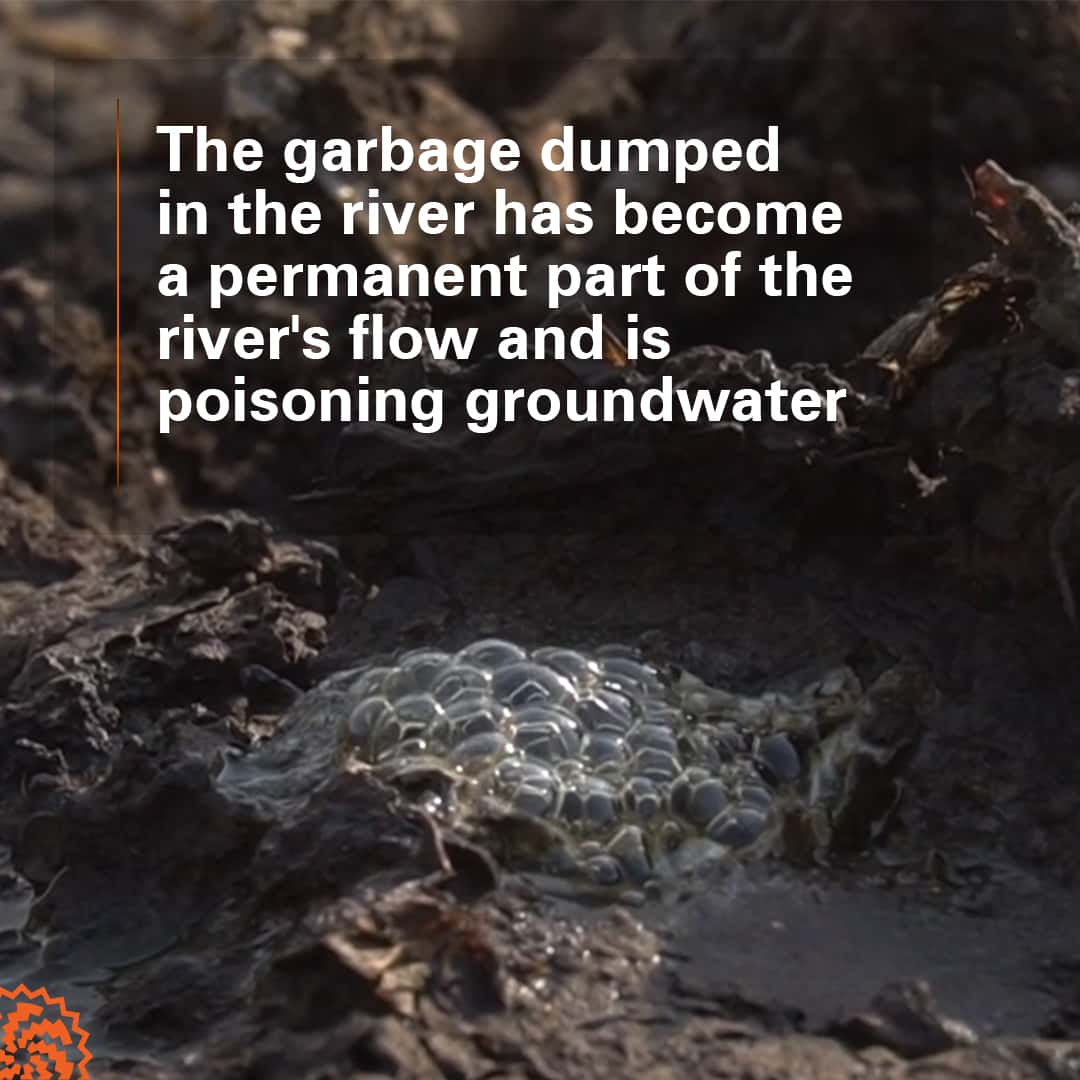
A large amount of this trash can be seen near and inside the 14 drains passing through Lahore. These drains then carry all this waste into the Ravi.
A river of trash
Sagian Bridge connects Lahore with some nearby towns such as Sheikhupura and Jaranwala. There are two small settlements just where the bridge starts. Here one can also see a garbage compaction plant established by a private solid waste handling firm. This plant presses garbage into blocks so that it does not get scattered.
A local resident says a large number of trucks full of garbage come here every day from all across Lahore. They often dump this trash carelessly. There is huge pile of trash right next to the compaction plant. One can see some buffalos wandering nearby – and also some gypsy huts.
Boundary walls of houses in both the settlements are covered with real estate advertising. Several houses are also under construction here and local streets are filled with powdery sand dust.
From the top of a huge garbage pile here, the river can be seen clearly as a thin stream. On the left of the pile, one can see a large number of kites flying in the sky. They are trying to find the pieces of sacrificial meat thrown into river from the bridge.
There are many more slums and settlements along both banks of the river. One can also see many piles of trash – both burnt and unburnt -- along the river banks. The garbage produced in the two settlements near Sagian along with the waste coming out of small and cottage industry set up there is also dumped in the river whose bed looks like it has a thick coat of trash.
Muhammad Asif, a 17-year-old resident of a small settlement near the river, does not know where all the trash scattered near his home comes from. “Some unknown vehicles bring this garbage in the night and unload it here. Sometime they also set it on fire,” he claims.
A local shopkeeper is not bothered by all the trash lying around his shop. He is, instead, worried about the dust kicked up by the vehicles that bring trash to the river – and also the stench coming out from the water dripping down from the trash carried by these vehicles.
Plastic bags can be seen scattered not only near Sagian bridge but also all along the river banks. At many places, garbage has become so mixed with the river that it has turned its bed into stinking slush. Gypsies have made their huts and cattle yards in the dry part of the river so cattle dung is also mixing in whatever little water the Ravi now has.
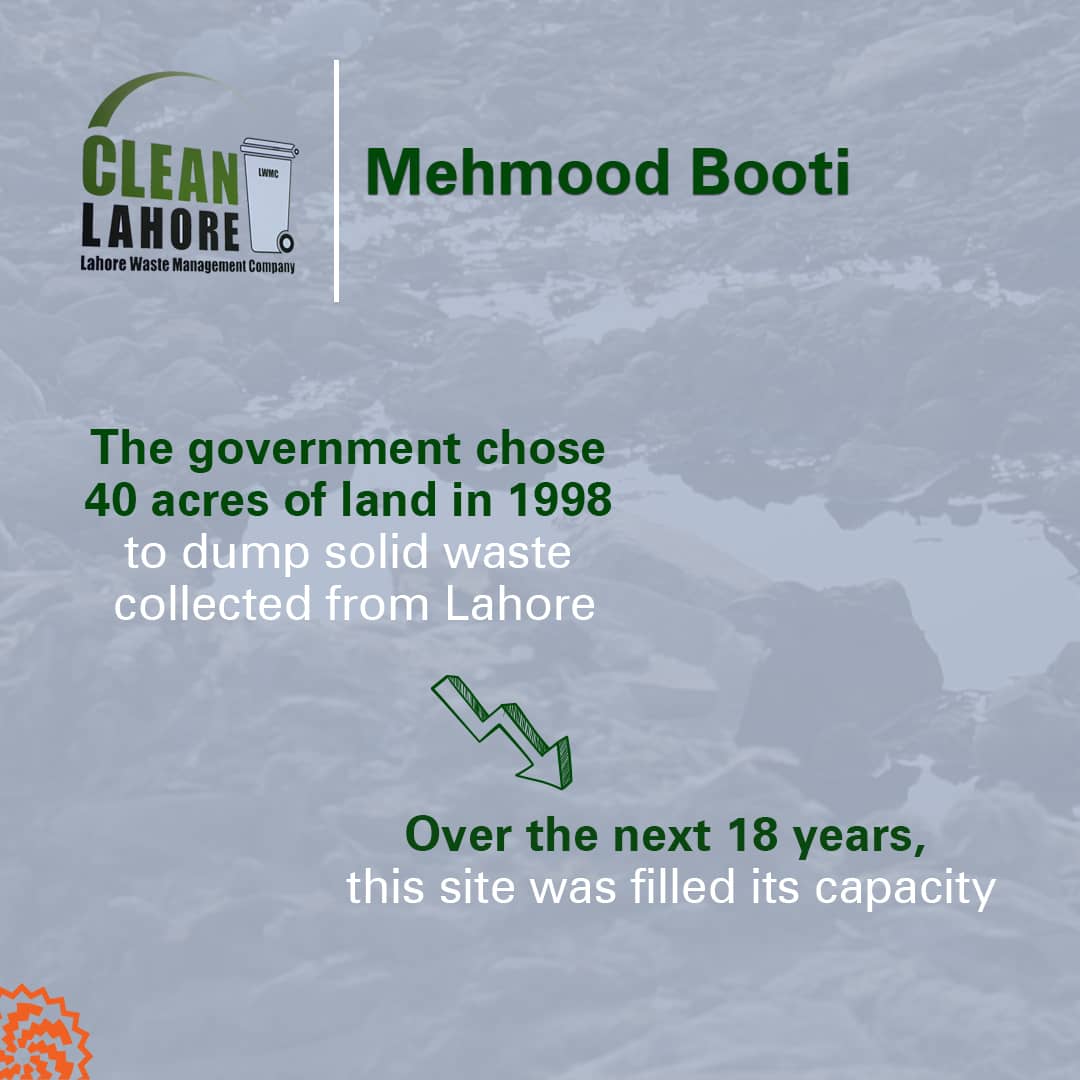
Unsurprisingly, according to a research report published in the Asian Journal of Social Sciences and Humanities in 2012, underground water in settlements near the Ravi has become highly polluted due to the trash being thrown in the river. The writers of the report found Total Coliform (TC), Fecal Coliform (FC), E.Coli and Salmonella SPP bacteria in the samples collected from potable and underground water from Mehmood Booti, a major garbage dumping site next to the Ravi. These bacteria cause severe infections related to stomach, liver and skin. The report reached the worrying conclusion that underground water in this area is totally unfit for drinking during the rainy season.
A river running dry
The Ravi is one of the six rivers flowing from India into Pakistan. Towards the end of the 1950s, Pakistan and India signed a water distribution agreement which gave India exclusive rights to use the waters of three of these rivers – the Ravi being one of them.
Consequently, India has built several dams on this river which leave very little water to flow into Pakistan. To overcome this water shortage, Pakistan has linked the Ravi to the Chenab river through two canals (Bambanwala: Bedian and Qadirabad: Balloki) so as to fulfil the irrigation needs of Lahore and Faisalabad divisions.
A report published by the Asian Development Bank states that roughly 50 million people are living along the Ravi in Pakistan. Nearly 11 million of these live in Lahore alone.
Ravi also plays an important role in Punjab’s economy as its waters are used for irrigating 30 per cent of the total agricultural land in Pakistan. These waters, however, are hardly suitable for growing crops. A report published by Punjab’s Environmental Protection Department in 2009 says that all aquatic life has been killed in the Ravi because its water lacks Oxygen which the fish and other water creatures require to breathe.
The reason for this state of affairs, according to the report, is the garbage, industrial waste, agricultural trash and all kinds of rubbish that enters the Ravi from the big cities located on it.
What is making this bad situation worse is the fact that no measures are being made to prevent all this trash from getting into the river. If any measures are being taken at all by anyone, they are certainly not proving effective.
The garbage mountain
The government chose 40 acres of land at Mehmood Booti in 1998 to dump and dispose the solid waste collected from Lahore. Over the next 18 year, this site was filled to capacity.
Mehmood Booti is located at only a few kilometres to the south of the Ravi – somewhere in between the airport and a river bridge at Shahdara. According to an English daily, the remains of an ancient bridge were found near the dumping site in 2011. The archeology department says more research is needed to determine the purpose of this bridge but it is evident that Mehmood Booti is situated at some old course of the Ravi and, therefore, is still potentially dangerous for the river.
The trash hill at Mehmood Booti can be seen from the distance of several kilometres. Its front side is hidden from the view through a large plantation of trees.
The trash mountain here is 80 feet high. One can reach its climax after walking over several little mounds of trash through a path made by garbage trucks. A solid waste composting plant is located to the west of the mountain. It was established by the Lahore Solid Waste Management Company a few years ago but it is not working due to several reasons.
To the north of the garbage mountain are some factories and then there is agricultural land -- stretching right up to the river.
The trash at Mehmood Booti is not covered – as dumping sites should be -- so winds carry its trash and spread it in the nearby areas. Some of his stray garbage also becomes a part of the thousands of tons of trash already dumped in the Ravi.
Bubbling and frothing water puddles at Mehmood Booti clearly suggest that the trash here is contaminated with dangerous substances which, along with the waste itself, are seeping into – and polluting -- the underground water.
Also Read
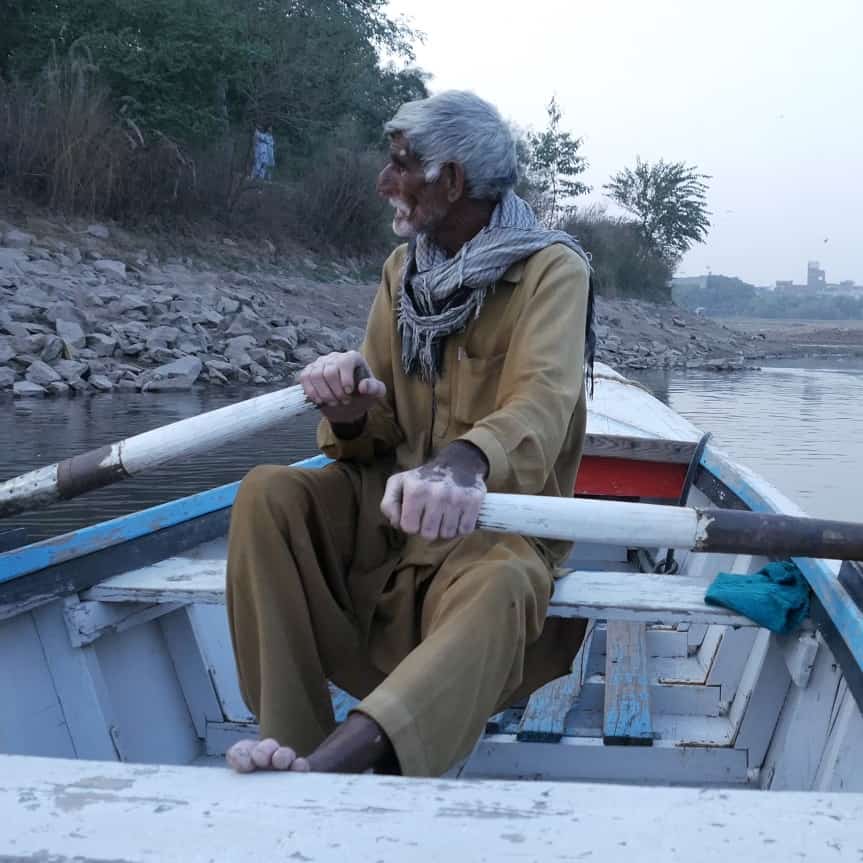
Land acquisition for Ravi River Front: 'The government is adopting different strategies in different parts of the project'
Dr Kausar Abdullah Malik is working as the dean of postgraduate studies at the F C College University, Lahore. He has presided over a commission established by the Lahore High Court for the environmental revival of the Ravi. He says that garbage dumped at Mehmood Booti should be covered otherwise it can release harmful gases into air. “Developed countries cover such dumping sites with polythene sheets and collect these gases through small pipes inserted in those sheets in order to use them as fuel but in Pakistan we have no such facility so these gases are polluting the air.”
Where is all the garbage going?
Everyday Lahore produce nearly 5500 tons of garbage. According to the Lahore Waste Management Company, 85 per cent of this trash reaches the officially-designated garbage dumping sites but independent analysts say the quantity of unmanaged garbage is far more than what the company claims.
Lakhoder is the largest of the official locations in Lahore to dump waste. It is spread over 128 acres of land. The Lahore Solid Waste Management Company says it is Pakistan’s first scientifically developed ‘sanitary landfill site’ because, according to the official claims, it follows all the international standards on garbage collection and dumping.
Lakhoder is located about five and a half kilometres to the west of Mehmood Booti. Its two initial parts can handle 4000 to 4500 tons of trash every day. The Lahore Waste Management Company claims this landfill can prevent the garbage being dumped here from polluting underground water and soil. The Methane gas being produced here will also be used for power generation, the company avers.
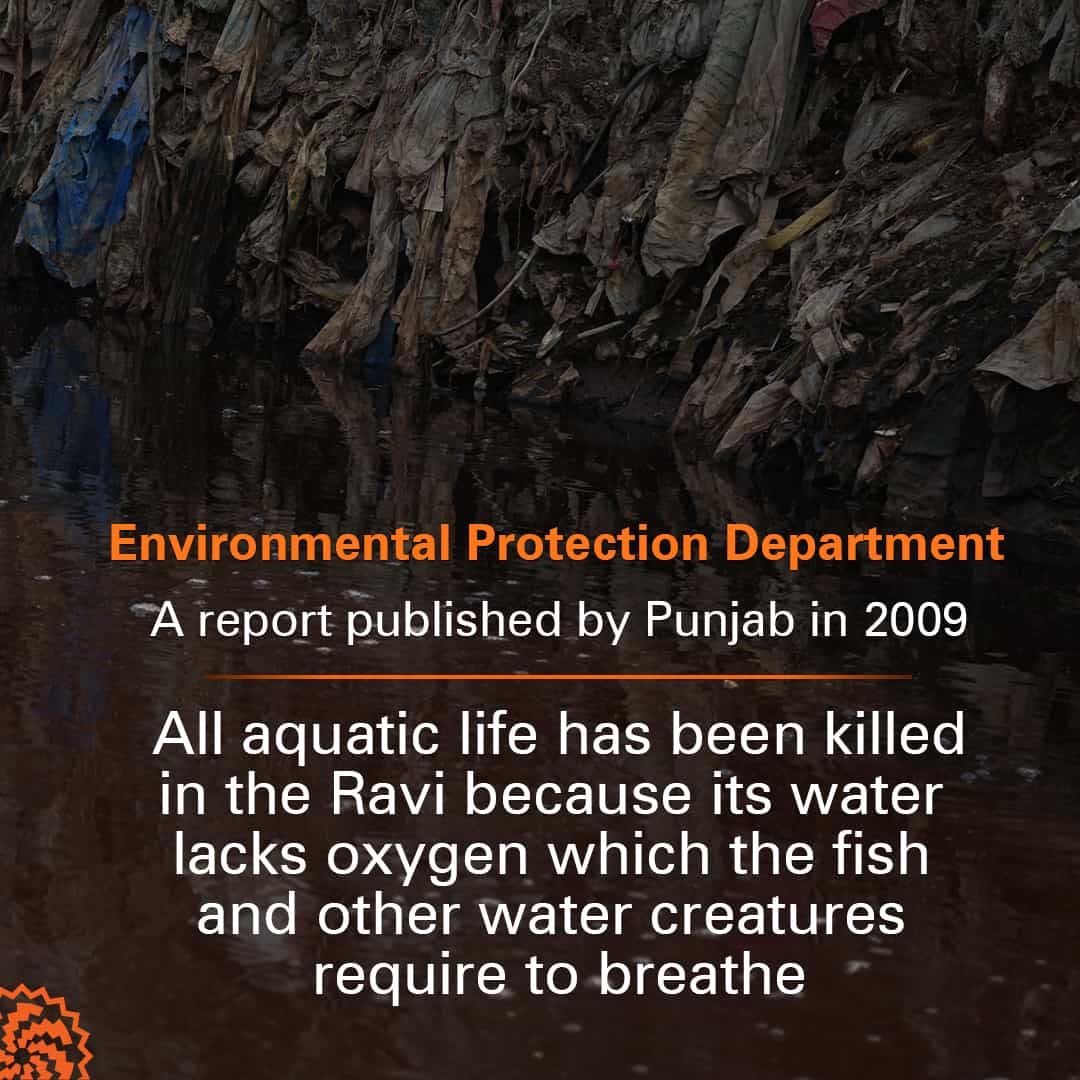
This site cost the government nearly one billion rupees but it is not being used properly as waste can be seen dispersed everywhere here – which, just like the garbage mountain at Mehmood Booti, can have harmful effects on underground water and soil in the area.
Muhammad Asif Iqbal, deputy general manager operations at the Lahore Waste Management Company, says the government conducted proper research and surveys before establishing this waste dumping site. “These surveys were meant to ensure that the dumping site was far from human settlements, at least ten kilometres away from the airport and at a safe distance from waterways,” he says. “Our experts followed all these guidelines and we also got permission from the Punjab Environmental Protection Department before constructing this site.”
Rafey Alam does not agree that Lakhoder site is working as it should. He is a lawyer and an expert in environmental law. He has been a member of the river Ravi commission established by the high court. It was, indeed, on his petition that the commission was set up in the first place.
He says a large amount of waste is being collected and disposed in improper, unscientific and harmful manner and blames the Lahore Waste Management Company for all this disorder. He says: “Lahore is one of the lucky cities which have a waste dumping site of their own with modern facilities. It is now the responsibility of the waste management company to dispose all the trash in a scientific manner.” But, he adds, the company does not have the machinery required to do so. “So the garbage is being thrown everywhere and it will not be surprising if a part of it is also getting into the Ravi.”
What are the practical and effective steps that the government can take to protect the river Ravi from all this trash?
Dr Kausar Abdullah Malik says the answer to these questions lies in science. “Technology can help us to save groundwater but unfortunately we are hostile to science.”
This report was first published by Lok Sujag on 8 Nov 2020, on its old website.
Published on 27 May 2022
